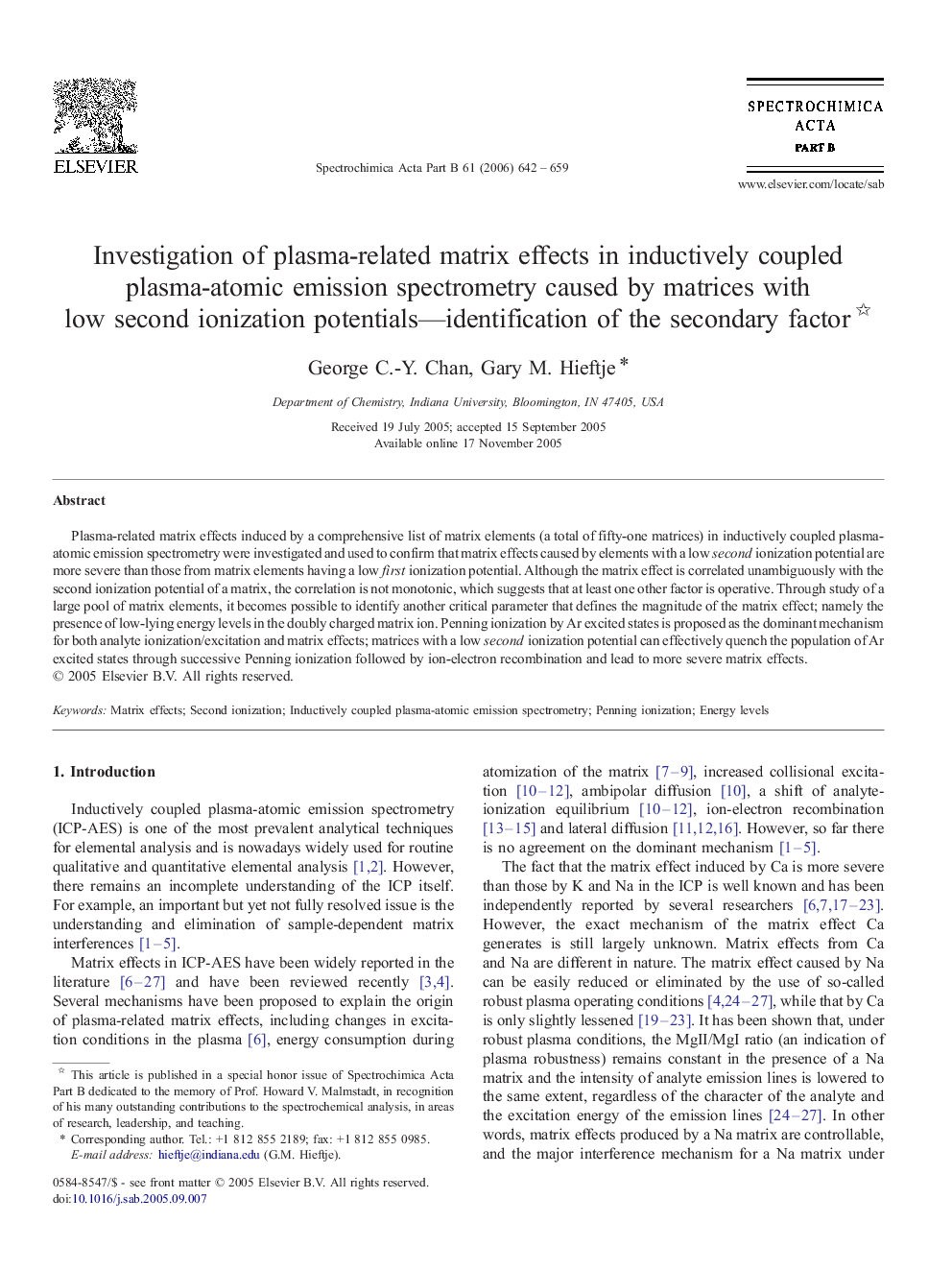| Article ID | Journal | Published Year | Pages | File Type |
|---|---|---|---|---|
| 1241037 | Spectrochimica Acta Part B: Atomic Spectroscopy | 2006 | 18 Pages |
Plasma-related matrix effects induced by a comprehensive list of matrix elements (a total of fifty-one matrices) in inductively coupled plasma-atomic emission spectrometry were investigated and used to confirm that matrix effects caused by elements with a low second ionization potential are more severe than those from matrix elements having a low first ionization potential. Although the matrix effect is correlated unambiguously with the second ionization potential of a matrix, the correlation is not monotonic, which suggests that at least one other factor is operative. Through study of a large pool of matrix elements, it becomes possible to identify another critical parameter that defines the magnitude of the matrix effect; namely the presence of low-lying energy levels in the doubly charged matrix ion. Penning ionization by Ar excited states is proposed as the dominant mechanism for both analyte ionization/excitation and matrix effects; matrices with a low second ionization potential can effectively quench the population of Ar excited states through successive Penning ionization followed by ion-electron recombination and lead to more severe matrix effects.
